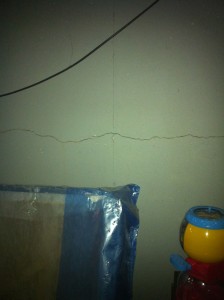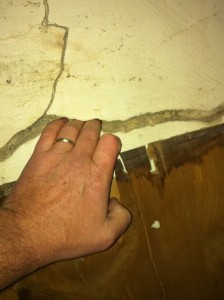 Wall cracks are a common malady that affects the foundation walls of many homes. It’s important not to ignore even the fine, superficial cracks, as they can be the start of a potentially severe issue that can impact the integrity of the structure. The indications of problems in the foundation walls:
Wall cracks are a common malady that affects the foundation walls of many homes. It’s important not to ignore even the fine, superficial cracks, as they can be the start of a potentially severe issue that can impact the integrity of the structure. The indications of problems in the foundation walls:
- Cracks in concrete/drywall
- Leaks in the basement/crawl space
- Cracks/gaps around the doors and windows
- Doors/windows that jam or stick
- A chimney that tilts or leans
What causes foundation wall cracks?
- Poor grading or drainage around a structure can result in slow drainage of water. This water accumulates around the foundation walls and results in an increase in the hydrostatic pressure. This and the natural weight of the soil around the home, act in conjunction and add significant pressure to the load-bearing capacity of these foundation walls. If the issue isn’t addressed on time, it causes them to bow, buckle and tear, and Wall Cracks appear on them too.
- At times, if a property has clay soils, these tend to contract and expand dramatically with the water in the surroundings. In a way, this type of soil does even more damage.
Fixing wall cracks
 If you have noticed any of these signs on your property, call us at All Aspects Waterproofing without delay. We conduct thorough checks on the structure when you call us about this issue. We identify whether these cracks are going to have a negative impact on the structure, and design a detailed process to fix them effectively. The processes we follow are:
If you have noticed any of these signs on your property, call us at All Aspects Waterproofing without delay. We conduct thorough checks on the structure when you call us about this issue. We identify whether these cracks are going to have a negative impact on the structure, and design a detailed process to fix them effectively. The processes we follow are:
- For horizontal wall cracks – Carbon fiber straps will be installed from the top, right to the bottom of the walls. These straps will then be coated with epoxy and this creates an extremely strong bond
- Horizontal cracks in a cinder block foundation-Wall pins will be installed in the walls. These will be reinforced with strong rebar rods. They are then filled with solid concrete; a fortified cement mixture will then be troweled over the open pockets
- Vertical cracks- Carbon fiber stitching will be applied along them; they will then be coated with an epoxy and this prevents the cracks from expanding
